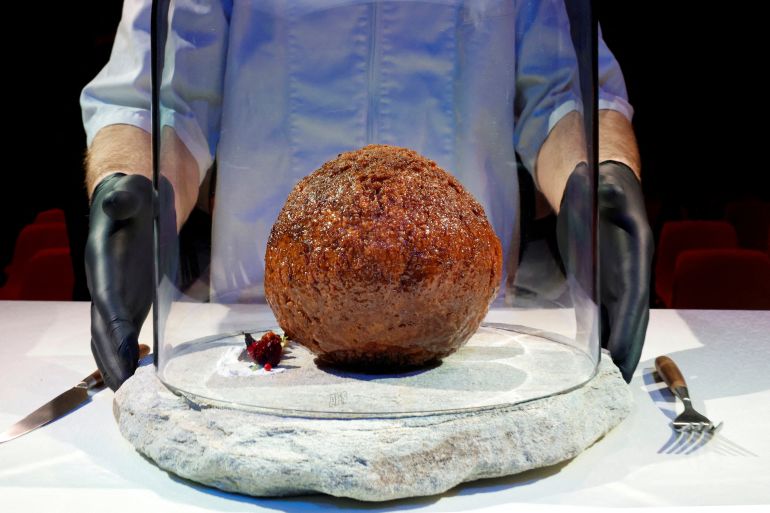Giant meatball from extinct mammoth DNA unveiled by food firm
Meatball made of sheep cells inserted with a singular mammoth gene called myoglobin, African elephant DNA was inserted to complete it.

A giant meatball made from flesh cultivated using the DNA of an extinct woolly mammoth has been unveiled at Nemo, a science museum in the Netherlands.
The meatball was created by Australian cultured meat company Vow which said it wanted to get people talking about cultured meat, calling it a more sustainable alternative to real meat.
Keep reading
list of 4 itemsHow a single mum manages a household of nine on $100 a week
Ramadan 2023: Where do your dates come from?
Why Rahul Gandhi’s parliament expulsion could backfire on Modi
“We wanted to create something that was totally different from anything you can get now,” Vow co-founder Tim Noakesmith told Reuters news agency on Tuesday, adding that an additional reason for choosing mammoth is that scientists believe that the animal’s extinction was caused by climate change.
“We face a similar fate if we don’t do things differently,” Noakesmith added.
The meatball was made of sheep cells inserted with a singular mammoth gene called myoglobin.
“When it comes to meat, myoglobin is responsible for the aroma, the colour and the taste”, James Ryall, Vow’s chief scientific officer explained.
Since the mammoth’s DNA sequence obtained by Vow had a few gaps, African elephant DNA was inserted to complete it.
“Much like they do in the movie Jurassic Park”, Ryall said, stressing the biggest difference is that they were not creating actual animals.

While creating cultured meat usually means using the blood of a dead calf, Vow used an alternative, meaning no animals were killed in the making of the mammoth meatball.
The meatball, which has the aroma of crocodile meat, is currently not for consumption.
“Its protein is literally 4,000 years old. We haven’t seen it in a very long time. That means we want to put it through rigorous tests, something that we would do with any product we bring to the market,” Noakesmith said.
Cultured meat as food is not yet regulated in the European Union.
Meat consumption is projected to increase more than 70 percent by 2050, and scientists have increasingly been turning to alternatives such as plant-based meats and lab-grown meat.